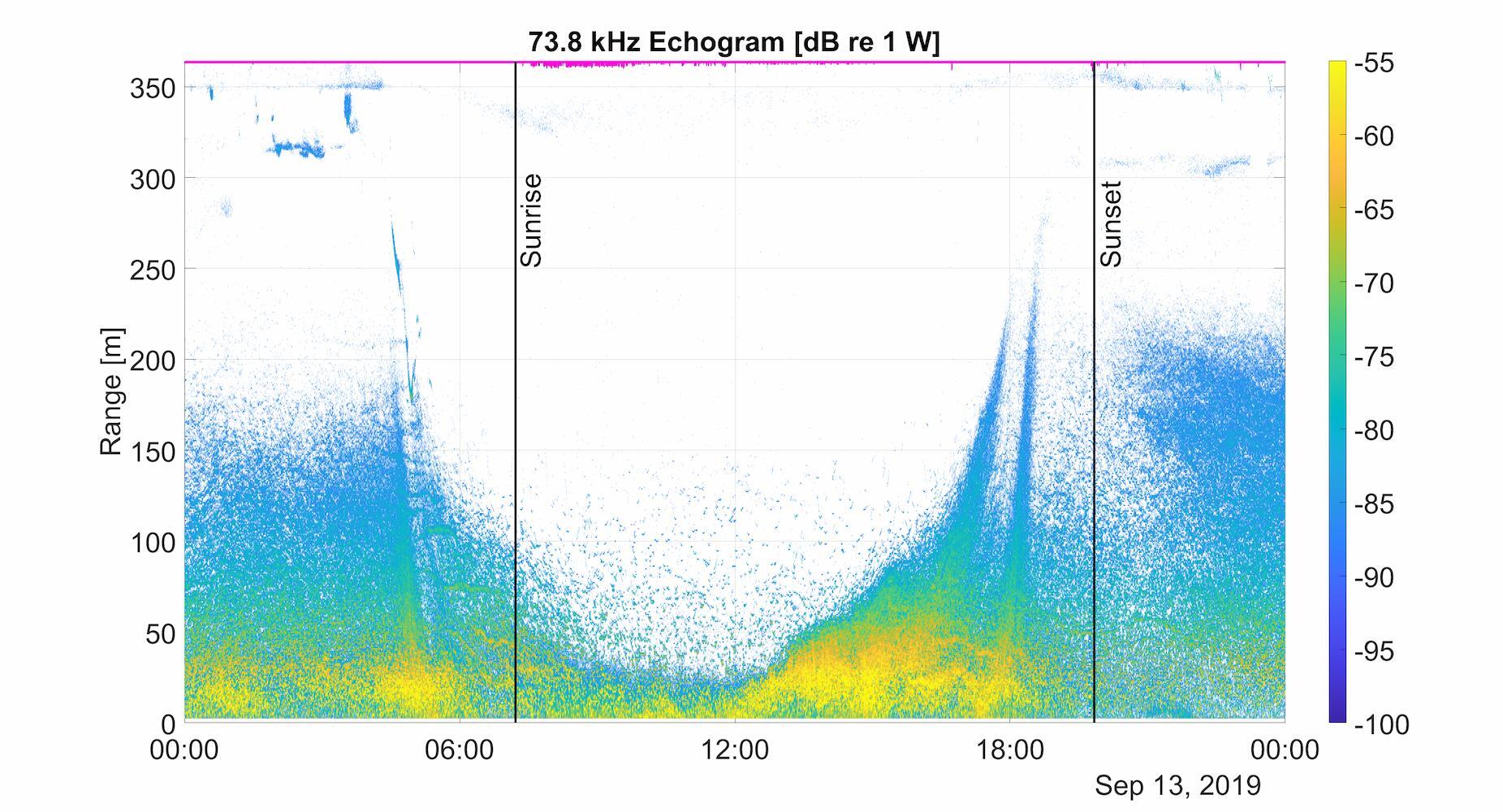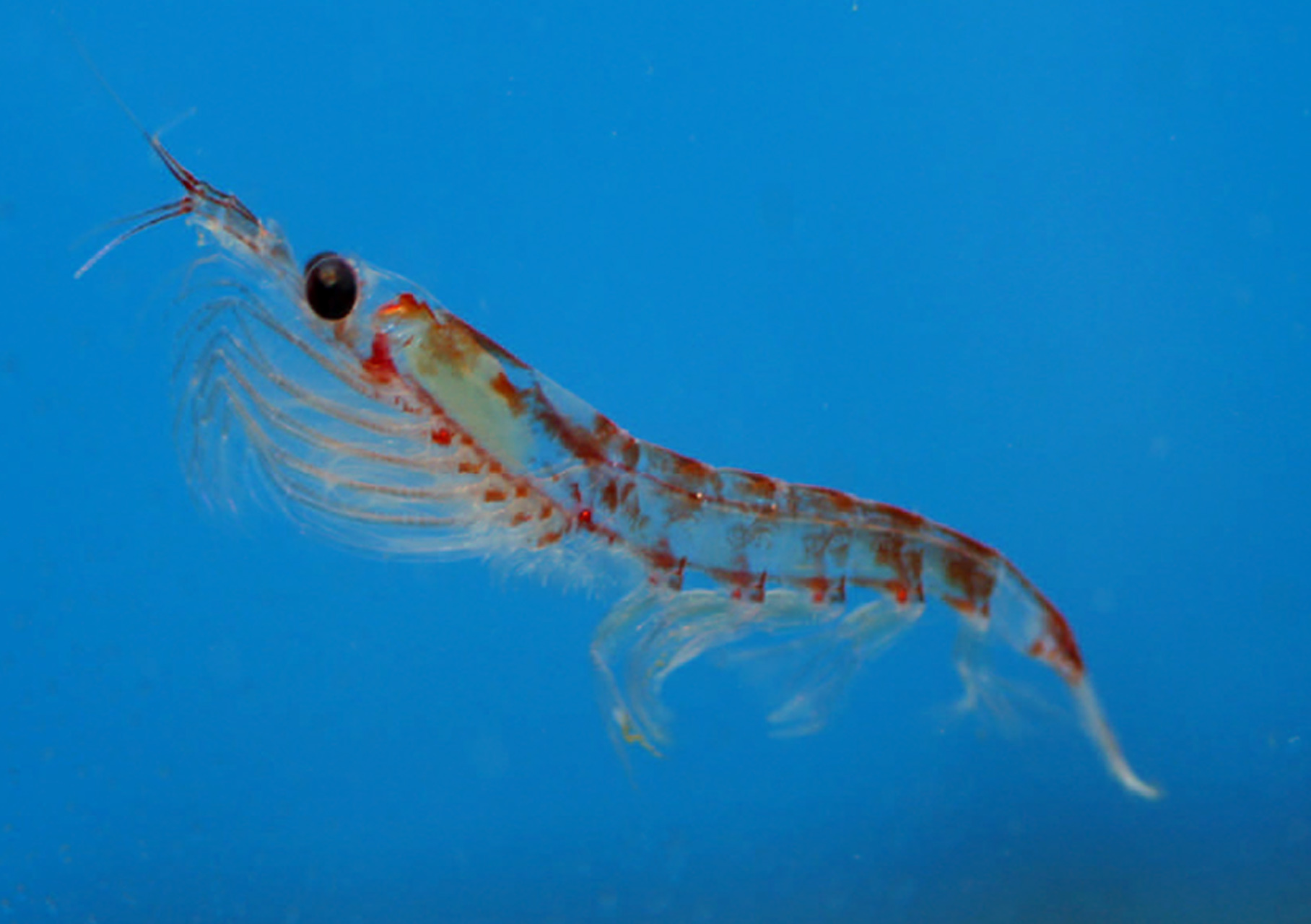
Performance evaluation of an ADCP combined with a scientific echosounder
- User stories
Synopsis
Challenge
Capabilities of a combined ADCP / echosounder system require validation and studies.
Solution
Researchers at CNRS deployed a Signature 100 with a combined echosounder in the Mediterranean for a month to analyze the resulting ADCP and echosounder data.
Benefit
High-quality echograms combined with current measurement at the same site (as discovered by the research team) can provide insights to processes such as diel vertical migration.
The Nortek Signature 100 (Figure 1) offers both a scientific echosounder as well as an Acoustic Doppler Current Profiler. Due to this combined capability, it is seeing increased usage in biomass flux applications, particularly in Antarctic krill research. However, capabilities of the system are still being studied and the present work aims to expand characterization of its performance. To that effect, a four-month deployment was carried out by the French National Center for Scientific Research (CNRS) in the Mediterranean Sea with an up-looking Signature 100 mounted atop the ALBATROSS mooring line. The line was at a total water depth of 2420 m and its top was approximately 370 m below the surface.

Using a combined ADCP and scientific echosounder to study diel vertical migration
In terms of biomass, diel vertical migration (DVM) is potentially the largest animal migration on Earth. Interest in diel vertical migration has increased in recent years due to its role in the global ocean biological pump, as its contribution to the transfer of atmospheric CO2 to the deep ocean is not yet properly accounted for in climate models.
“Up until now, ADCPs have often been deployed together with scientific echosounders, as these have traditionally been more capable of assessing biology within the water column, such as diel vertical migration,” explains David Velasco, Principal Program Manager at Nortek.
However, these two technologies (ADCPs and scientific echosounders) have historically been developed by separate companies, with different objectives, with the necessary integration left for the end user to handle.
“The Nortek Signature 100 aims to reduce this complexity and increase the ease of use to the operator (and consequently reduce cost) by combining the ADCP and scientific echosounder technologies into a single instrument,” Velasco adds.
Using a concurrent current profiling and scientific echosounder sampling regime
A four-month deployment was carried out by the French National Center for Scientific Research (CNRS) from 24 August 2019 until 3 January 2020 in the western Ligurian Sea (in the northwest Mediterranean) to further evaluate the Nortek Signature 100. The instrument was configured with a concurrent current profiling and scientific echosounder sampling regime.
The ADCP portion of the instrument was configured to transmit 40 pings with 6.25 per cent bandwidth (Long-Range mode) at 0.16 Hz evenly spread over an averaging interval of 240 s. This sequence was repeated every 30 minutes. Depth cell size was 5 m and a total of 90 cells were collected, with a blanking distance of 2 m.
The scientific echosounder portion of the instrument was configured to transmit a 90.9 kHz centered wideband (50 per cent bandwidth) chirp of 6 ms duration, with pulse compression applied, and storage of in-phase (I) and quadrature-phase (Q) components of the return signal at 45.45 kHz (50 per cent of the center frequency). In addition to the chirp, a 70 kHz monochromatic pulse of 1 ms duration was also transmitted one second after the chirp. Both pulses were transmitted continuously throughout the four-month deployment at 12 s intervals, and each return was recorded in 597 depth cells of 0.75 m size.
What the scientific echosounder data reveals about diel vertical migration
Data from this deployment show significant variations in scattering conditions between daytime and nighttime due to diel vertical migration (DVM), often unrelated to horizontal velocity fluctuations, highlighting not only the multiple frequency-band capabilities of the system (up to seven bands), but also the strength of the combined echosounder and current profiling functions.

Echoview, a commercial software package for hydroacoustic data processing, was used to further explore the spatial and temporal patterns of the organisms observed in the echosounder data. A semi-automated technique was implemented to efficiently and objectively clean (e.g. remove interference generated by passing ship traffic) and classify the data (e.g. based on relative frequency response or morphology), as shown in Figure 2. Additionally, the narrow-bandwidth and pulse-compressed echosounder data were used to generate outputs that can contribute to the management and monitoring of aquatic resources, as shown in Figure 3.


Understanding diel vertical migration with vertical velocity data from the Signature 100 ADCP
Vertical velocities taken directly from the Signature 100 show that organisms in this part of the Mediterranean Sea appear to start their upward migration up to six hours before sunset (Figure 4), increasing in speed as sunset approaches, reaching up to 5 cm/s (Figure 5). By the time the sun has risen, they have completed their journey. They then descend at a slightly slower rate of approximately 4 cm/s and appear to begin their journey less than four hours prior to sunrise. Opposite to their ascent sequence, they appear to move faster at the start of their descent than at the end. Additionally, speeds are noticeably higher during autumn (September) than later in winter (December).
Access the full paper “Performance evaluation of a combined ADCP scientific echosounder system” on ResearchGate.




